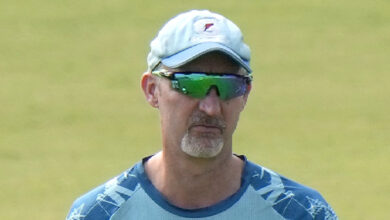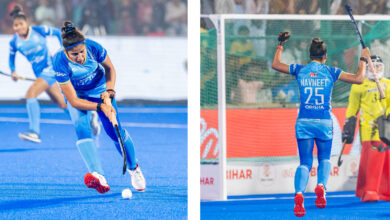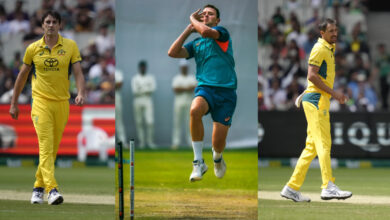Argentina vs Croatia: Can the Albiceleste penetrate the ‘best midfield in the world’?

831 players, 32 teams and (occasionally) four matches per day – following the football World Cup can get a little overwhelming. For the next month, The Indian Express will cut through the clutter and handpick the biggest storyline of the day every morning.
Showcase gameArgentina vs Croatia (Semifinal)12.30 am (Tuesday), Lusail Stadium
Croatia do not have any direct goalscoring options. They do not have an incisive frontline capable of creating something out of nothing, nor a world-beating striker. They have not shown any exceptional ability to create from width, nor have they shown any reliability from set pieces.
Yet, not a single one of their opponents at this year’s football World Cup have found any joy in playing against them. Not even massive pre-tournament favourites Brazil, who were frustrated into a 1-1 draw and defeated on penalties in the quarterfinal.
Brazil’s intricate attacking play is full of flair, but could do no damage to the Croatian engine. On the face of it, it was a heroically resilient performance. Goalkeeper Dominik Livakovic made 11 saves. They isolated Casemiro in midfield, and made sure the ball never made it to Vinicius Jr on the left wing pressing the left side of the defence high up the pitch, both excerpts of clever game management from coach Zlatko Dalic. But Dalic had a different opinion as to why his side were able to pull off the upset.
In 2006, Argentina faced Croatia in a friendly ⚔️
🇭🇷 Luka Modrić made his debut for Croatia
🇦🇷 Leo Messi scored his first goal for Argentina
1️⃣6️⃣ years later, they meet in the WC semis 😲 pic.twitter.com/Pnn8Z0gcuM
— 433 (@433) December 12, 2022
“I said several times that Croatia has the best midfield in the world,” he said post-match. “I believe the midfield is the best part of our team, they (kept) possession and blocked our opponents.”
The effectiveness of this Croatian team is dependent on the performance of its midfield triangle of Marcelo Brozovic, Mateo Kovacic, and Luka Modric. They prevent the opposition from creating chances, but not sitting deep and making heroic challenges and interventions, but simply keeping them off the ball.
The trio wrestles for possession not to create pressure and consent attacking threat but simply to control the tempo. No matter what the result, Croatia’s midfield makes sure the game is played at Croatia’s pace, even in the face of a team as talented as Brazil. Unlike most other possession-based teams, holding the ball is a means of defence rather than attack.
In the quarterfinal, according to stats provided FIFA, the possession between the two teams was shared exactly evenly. Croatia had 131 receptions between midfield and defence as opposed to Brazil’s 111, meaning that despite Brazil creating more chances, Croatia passed their midfield 20 more times.
Most touches ➡️ Luka ModricMost passes ➡️ Luka ModricMost important ➡️ Luka Modric#FIFAWorldCup | #Qatar2022 pic.twitter.com/Hhv143YmCz
— Opta Analyst (@OptaAnalyst) December 9, 2022
The opponents can create chances through bursts of ingenuity – one would struggle to find a burst better than Neymar’s goal in extra time – but not through consent pressure, or outplaying them in midfield. Croatia are comfortable having the entire game played out in the middle third of the pitch, refusing to give up possession or territory.
The midfield trio does not boast of rabid athleticism, but pure technique and balance. Brozovic plays the deepest role, stitching play between defence and attack keeping the team ticking along through short passing, positioning himself to intercept balls that try to pass the midfield. Kovacic plays a bit further forward, with an appreciation for space like few others that play in his position, always on the half turn able to res pressure while dribbling and move the ball from midfield to attack.
And then there is Luka Modric. The 2018 Ballon D’or winner is one of the finest technicians of his generation. The game seems to play out perfectly in his mind, dropping deep to receive the ball and take the sting out of an opposition attack keeping possession, moving forward beating a man or two and spraying inch-perfect passes, striking from long range, making late runs into the box. Always active, never out of place.
Their weakness is that for all the midfield control, they do not have the individual talent to threaten going forward. Instead, they play the waiting game, dictating the tempo, waiting for the right chance, conserving energy for extra time, converting all their penalties. Eight of their last nine tournament games have gone beyond 90 minutes, they have lost only one – the 2018 World Cup final against France.
Next up are Argentina, who have made a mid-tournament midfield change of their own, dropping Enzo Fernandez in the middle of the park to exercise more control, and unlike Brazil, they will be matching Croatia up in midfield man-for-man. They have improved game after game, and look more settled than they were at the start of the tournament.Subscriber Only StoriesPremiumPremiumPremiumPremium
However, much of their attacking play has depended on Lionel Messi for individual moments of inspiration, and he has delivered. The big question is: with Croatia’s ability to frustrate their opposition through midfield, will that continue to be enough?







